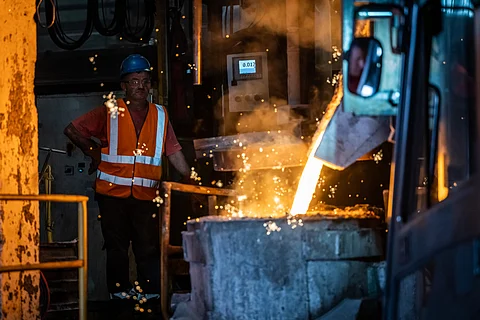

NGT orders IIT Kharagpur to investigate pollution from coal-based rotary kilns in steelmaking
Petition claims DRI produced through coal-based technology causes severe emissions
TERI and CEEW reports recommend cleaner technologies, waste heat recovery and fuel shifts
Alternatives include hydrogen, natural gas and biofuels to cut coal use
Tribunal issues notices, case to be heard after respondents file replies
The National Green Tribunal (NGT) has directed the Indian Institute of Technology (IIT) Kharagpur to submit a detailed report within eight weeks on the pollution caused by coal-based rotary kiln technology used in steel manufacturing. The tribunal’s bench has asked IIT to assess the veracity of the allegations raised in a petition.
The petitioner argued that producing steel through coal-based rotary kiln technology results in high levels of air pollution. Counsel for the complainant submitted that since the initial stage of iron-making known as Direct Reduced Iron (DRI) is produced using coal-based rotary kiln technology that is highly polluting, the process should only be permitted if it employs green or clean fuels.
In support of the petition, reference was made to several expert studies. A report by The Energy and Resources Institute, Financing Decarbonization of the Secondary Steel Sector in India: Towards an Enabling Environment, was cited to show pathways for reducing carbon emissions. The report proposes replacing obsolete technologies with modern, cost-effective options such as DRI, Electric Arc Furnaces (EAF), Induction Furnaces (IF) and re-rolling mills.
“The long-term strategy for decarbonisation identifies potential transitional options for the secondary steel sector. These include the replacement of coal-based DRI plants with natural gas / hydrogen-based DRI plants and integration of direct re-rolling with DRI, EAF and IF units,” the report stated.
The complainant also referred to a study by the Council on Energy, Environment and Water, Decarbonising Coal-based Direct Reduced Iron Production, which recommends further research into the operation of rotary kilns, including waste heat recovery, and suggests providing incentives for adopting such measures. It also calls for pilot projects on alternative fuels, such as biofuels, to reduce coal use, and advises a detailed economic analysis of pelletisation, noting that while it reduces coal consumption, it also increases costs.
“The economics of pelletisation should be evaluated, considering the trade-offs involved wrt [with respect to] lower coal consumption but higher pellet cost,” the report noted.
Another study, Decarbonisation Options for Rotary Kiln–Induction Furnace Process of Crude Steel Production, was highlighted by the petitioner to outline four main measures to reduce pollution: Energy savings through gravimetric separators to cut electricity consumption, use of biochar instead of coal, adoption of high-quality raw materials such as dolomite and a switch from coal to natural gas.
Citing yet another report, Decarbonizing India, counsel stressed that combating climate change is a global priority and India has committed to achieving net zero emissions by 2070. With the energy sector as the largest contributor to emissions, the petitioner argued that coal-based rotary kilns must be phased out in favour of clean fuels such as hydrogen or piped natural gas.
The tribunal has issued notices to the respondents and will hear the matter after their replies are filed.